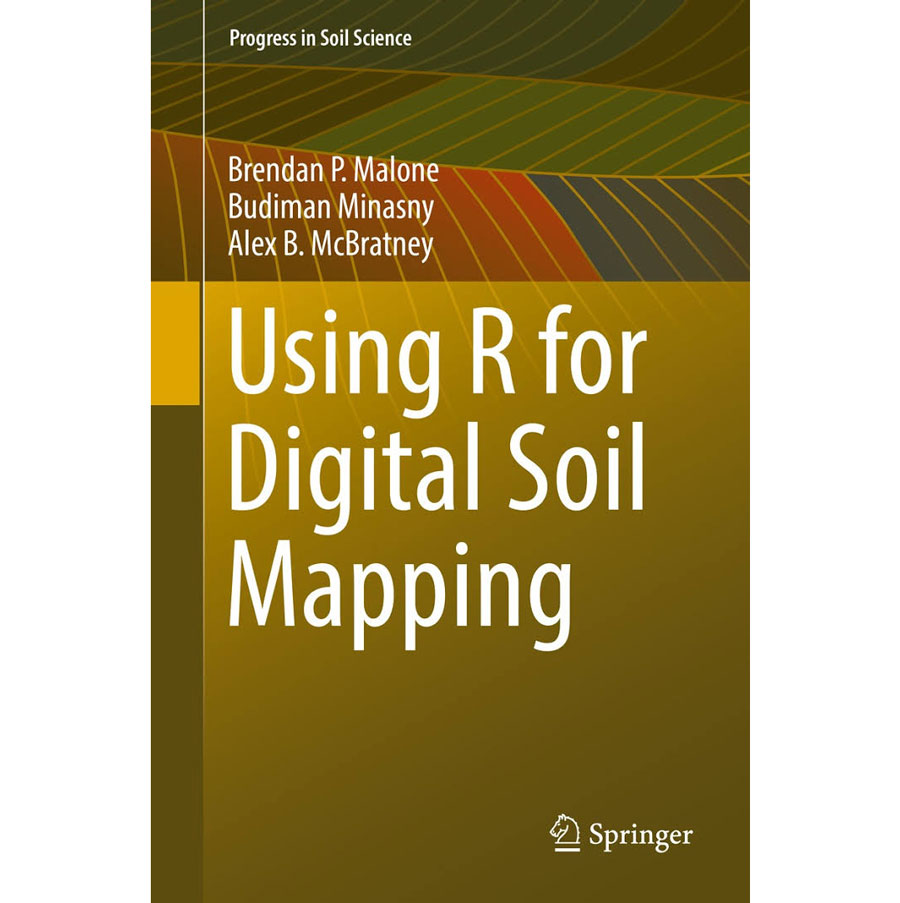This book entitled Using R for Digital Soil Mapping is an excellent book that clearly outlines the step-by-step procedures required for many aspects of digital soil mapping. This is my first time to learn R language and spatial modelling for DSM, but with the instructive book, it’s easy to produce different DSMs by following text and associated R scripts. It has been especially useful in Taiwan for soil organic carbon stock mapping in different soil depths and of different parent materials and different land uses. The other good experience is the clear pointers on how to prepare the covariates to build the spatial prediction functions for DSM by regression models if we do not have enough soil data. I strongly recommend this excellent book to any person to apply DSM techniques for studying the spatial variability of agriculture and environmental sciences.
Distinguished Professor Zueng-Sang Chen, Department of Agricultural Chemistry, National Taiwan University, Taipei, Taiwan.
I can recommend this book as an excellent support for those wanting to learn digital soil mapping methods. The hands-on exercises provide invaluable examples of code for implementing in the R computing language. The book will certainly assist you to develop skills in R. It will also introduce you to a very wide range of powerful numerical and categorical modelling approaches that are emerging to enable quantitative spatial and temporal inference of soil attributes at all scales from local to global. There is also a valuable chapter on how to assess uncertainty of the digital soil map that has been produced. The book exemplifies the quantum leap that is occurring in quantitative spatial and temporal modelling of soil attributes, and is a must for students of this discipline.
Carolyn Hedley, Soil Scientist, New Zealand.
Using R for Digital Soil Mapping is a fantastic resource that has enabled us to develop and build our skills in digital soil mapping (DSM) from scratch, so much so that this discipline has now become part of our agency core business in Tasmanian land evaluation. It’s thorough instructional content has enabled us to deliver a state-wide agricultural enterprise suitability mapping programme, developing quantitative soil property surfaces with uncertainties through predictive spatial modelling, including covariate processing, optimised soil sampling strategies and standardised soil depth-spline functions. We continually refer to this ‘easy to follow’ guide when developing the necessary R-code to undertake our DSM; using the freely available R environment rather than commercial software in itself has saved thousands of dollars in software fees and allowed automation and time-saving in many DSM tasks. This book is a must for any individual, academic institution or government soil agency wishing to embark into the rapidly developing world of DSM for land evaluation, and will definitely ease the ‘steepness’ in the learning curve.
Darren Kidd, Department of Primary Industries Parks Water and Environment, Tasmania, Australia.
This excellent book contains clear step-by-step examples in digital soil mapping (DSM), such as how to prepare covariates, to build spatial prediction functions using either regression or classification models and to apply the prediction functions to produce maps and their uncertainties. When I started my research in DSM, I have very little experience in R and spatial modelling. By following clear instructions presented in this book, I have succeeded in learning and developing DSM techniques for mapping the depth and carbon stock in Indonesian tropical peatlands. I highly recommend this book to anyone who wants to learn and apply DSM techniques.
Rudiyanto, Institut Pertanian Bogor, Indonesia.

Leave a Reply